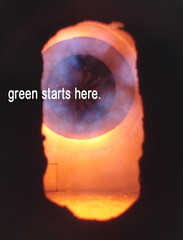But rich farmland is only part of the story in Modesto. After the harvest, much of the produce is often shipped to canneries and processing centers, powered by boilers that are facing tightened emission regulations — particularly as they relate to nitrogen oxide (NOx) and carbon dioxide (CO2) emissions.
That’s were I’ve been for the last few days, touring several processing centers and gathering base information for a special report. The report was commissioned by Benz Air Engineering, a company that evaluates power systems and then determines the best combination of new technologies and retrofits to reduce fuel consumption and emissions in the boiler room, which is the heart of any processing center.
What’s especially significant about the work done by Benz Air Engineering is that it allows these centers to maintain peak operations without overly expensive alternative energy solutions, the installation of new boilers, or the additional cost of emission penalties. All of which you and I would eventually pay for at the local grocery store, which is already experiencing double digit price jumps.
While the tour was an eye-opening crash course in mechanical engineering, there was something else that stood out to me. Most public relations and communication professionals aren’t prepared to communicate green, which is why some programs eventually fall flat. Sure, General Motors seems to be doing an adequate job, but green communication requires something more than slapping a green or blue sticker on a company Web site.
The future of green communication is going to require communicators to get their hands dirty at the source while remembering that multiple publics depend on different communication strategies to stay moving in the same direction. As it stands now, I no longer sure the general public knows what it means to be green or that their efforts to preserve the planet might adversely affect the very industry that seems to epitomize green in their minds.
Maybe it's time to forget fancy ideas for now — like Steron’s marketing snafu that overshot on the concept of free energy or cars that run on veggies — and think in terms of what might work with today’s infrastructure. According to Benz Air Engineering, the solution is simple. Increasing plant efficiency will dramatically reduce nitrogen oxide (NOx) and carbon dioxide (CO2) emissions. How much?
Just one of their retrofits reduced the nitrogen oxide (NOx) emissions of one boiler from 30 parts per million to 6 parts per million. And, because the boiler is operating more efficiently and burning less fuel while delivering the same output, CO2 was reduced 20 percent. What does that mean? Maybe it means that the backbone of American manufacturing and processing isn’t exclusively reliant on alternative fuels or the increased production of natural resources. Maybe we just need to make more efficient use of the energy we have on hand.
By doing that, it seems to me, plants could not only appreciate an immediate cost savings and financial payback in less than two years, but the overall cost of fossil fuels might level or drop in the short term as the result of diminished demand. At the same time, we all benefit from a greener planet without placing additional hardships on farmers.
In other words, we might not need to polarize environmental communication in the presidential debates between John McCain and Barack Obama. Maybe, we just need to be more efficient with our energy and our communication about it.

















4 comments:
Thanks for stopping by my blog. Hope to see you again...
Chronic Chick Talk
Any time. You have a nice mix of topics.
Best,
Rich
Rich, this is highly impressive stuff--the way some companies are, ingeniously, transfixing their efforts to milk "green" from their efforts, to the max.
But, what do you do when, ever since the 1970s we've been jumping up and down, wringing our hands about the necessity for going green--especially with non-poluting energy. And, 30 years later, only 7% of our total energy input--from such sources as geothermal, wind, sun power, and biofuels--is contributed to our energy mix?
Let's face it. If we are to survive as a civilized society, we are still highly dependent on fossil fuel sources.
Thanks Jack,
Yes, I agree that we're too reliant on fossil fuels. I also recognize that after a virtual stand still for three decades, as you point out, we didn't produce manageable gains in the areas where we might have.
So when you look at the entire power, manufacturing, and processing sector, their options to meet emission regulations are slim and most the solutions either unreliable or too costly over the short and long term. And unfortunately, they cannot turn to an geothermal, wind, sun power infrastructure that doesn't exist and won't exist before they have to meet those regulations.
Best,
Rich
Post a Comment